SA to NT and QLD
At last, after 3 changes of route due to COVID and borders we are on our way. Plan now is to go up
through NT to Kakadu, then across the top into Qld and Cape York.
List of identified species will be at the end of the last part of the whole trip (Part 4).
Australia is full of many wonderful and different things but also lots of long drives in between. I will write about the highlights, the places we should have gone and odd or funny things that happened. I have added some links to more information about places.
Apart from a few places or inclement weather we will be tenting for 3 months.
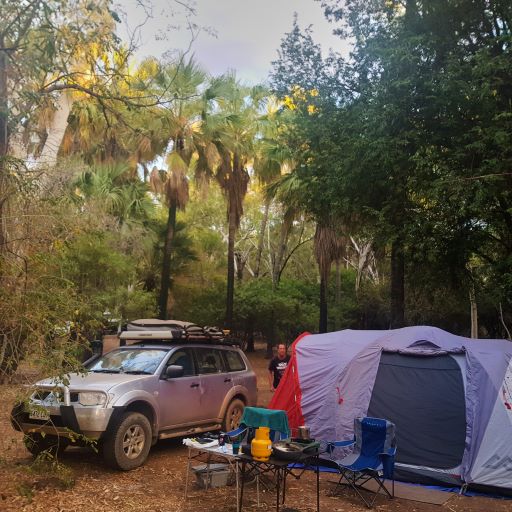
Trip will be in 4 parts
Part 1, Going up
Living on the coast we rarely see fog so such a surprise to find we were driving through thick fog with about 1 metre visibility heading up to Port Augusta – very beautiful though especially when it cleared to more like
100 meters.
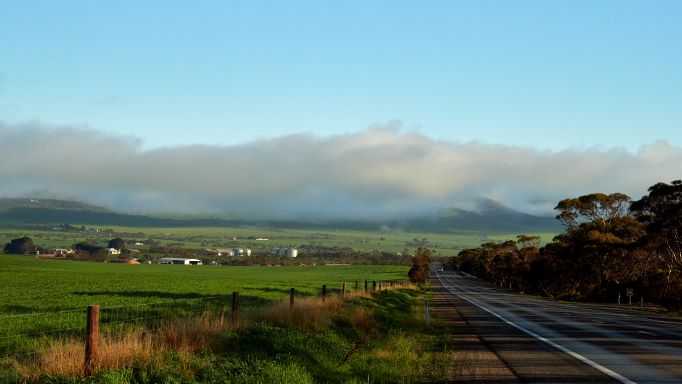
First night was in a cabin in Coober Pedy – still a great place if you have not been, very interesting but for us there was 1 downside, bought a takeaway from the Chinese here for dinner (which is always great and good value) but then left it in the cabin fridge – damn was so looking forward to it again for night 2.
Fuel can be an issue on minor roads but not normally on a major highway, we planned to fill up in Elliot but on getting there the roadhouse was shut (3pm?). (Not yet filled spare container as do not usually till going off road). Next Dunmarra – they had run out of fuel. When we asked when fuel was coming the answer
was “Dunno”. No chance on reaching next place but after wandering around the campsite we found a kind gentleman who sold us his spare container full. Thank you.
Lesson – always carry spare fuel even on major highways (or fill up at every service station – time consuming).
http://dalywaterspub.com/our-story
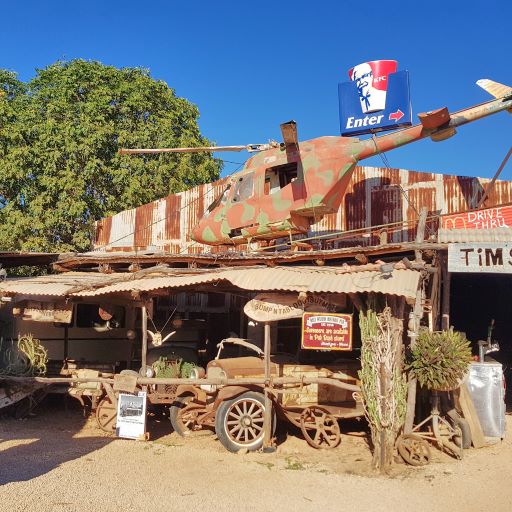
We had read on the website for Daly Waters that they had birds, possibly Gouldian Finches coming into a waterhole but when we got there and asked the staff it was – no birds, know nothing, (dont care, only here for 2 weeks), have pigs, a donkey and a horse. Asked for manager or owner – not there. Found a staff member later that did know, it was a leaking pipe at the back of the pub – but it did bring in a surprising number of birds.
While enjoying Beef and Barra meal at the pub we met some conspiracy theorists, ranging from UN dropping bomb on Auckland to cause an earthquake, to injecting cows against COVID with 5g. (Weird).
Drove into Mataranka for fuel on our way to Katherine. 30 mins prior to our arrival the road north is closed due to COVID. So a night in Mataranka Hot Springs, fantastic place, great walks, hot springs to swim in (just a little crowded this time) while we worked out what next. Met some guys driving an old renovated army truck around, must have cost a fortune in fuel.
https://nt.gov.au/leisure/parks-reserves/find-a-park/find-a-park-to-visit/elsey-national-park
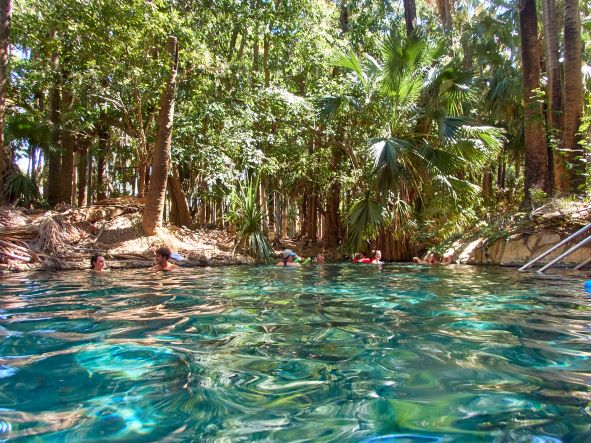
The North may have shut but luckily Qld relaxed its rule so off we set, back to Daly Waters. At a roadside stop we also found the Gouldian Finches – such a pleasure they are amazing birds.

A puncture driving through rough ground looking for a waterhole, lucky we carry stuff so Steve can fix it. Next Caranbirini Reserve – not heard of before but an awesome place. Great walk through some stunning rock formations, a stream and billabong with great birdlife.
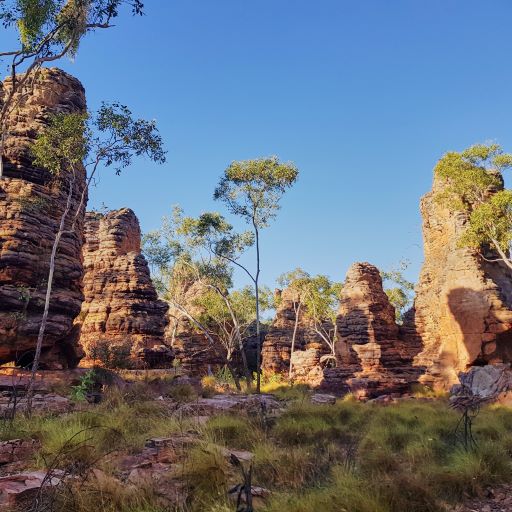
A few days later we drive an incredibly scenic drive down the back route into Adel’s grove and Lawn Hill National Park. After lots of dry country this is a true oasis, Lawn Hill Creek, Gregory and O’Shannasy rivers which flow all year round, being fed underground possibly from Papua New Guinea Highlands.
One of our birds to spot here was the Purple Crowned Fairywren – and we were lucky to find some with young. So beautiful.
We are finally having warmer nights too, although still having a campfire it is not as cold as it has been to date.
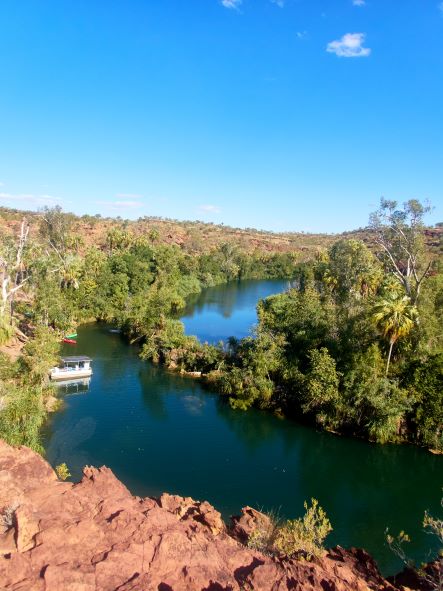
Fascinating history of old owner too, although a sad ending.
https://adelsgrove.com.au/history
Another hidden gem we had not heard of before is a day trip from here to Riversleigh World Heritage Site, among the world’s top 10 fossil sites. Fascinating and so unexpected amongst barren ground.
https://whc.unesco.org/en/list/698/
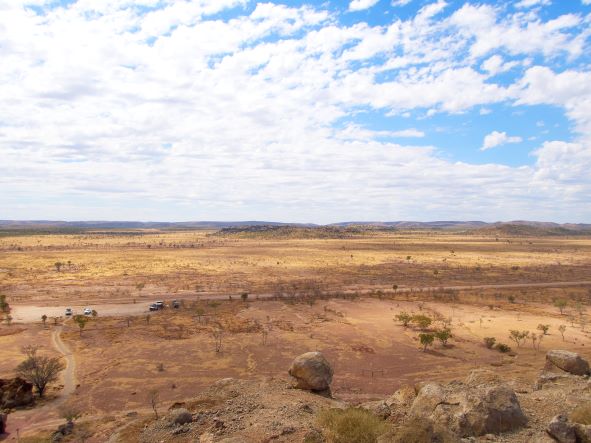
Driving a little further to the Gregory river we were again amazed at going from the land in picture above, dry and barren to this oasis of green and water crossings.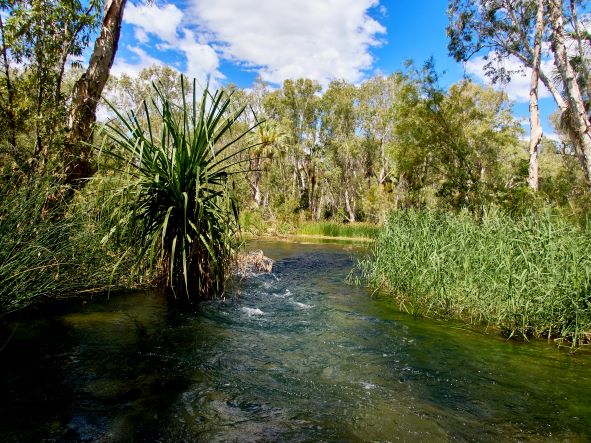
Also bumped into the army truck again, good chat, they have certainly had some experiences. They reckoned it would take them 7 days to get back home to Brisbane after months on the road.
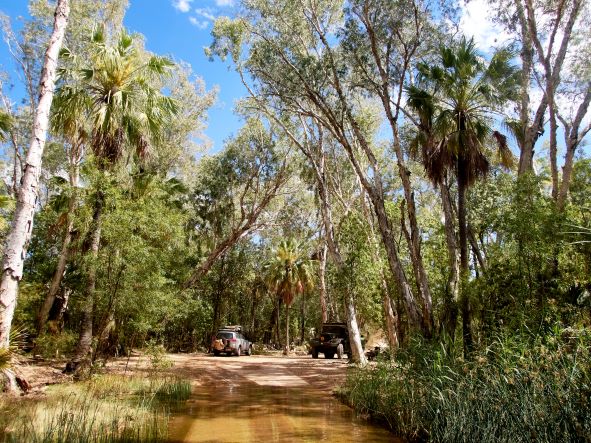
Back on route driving through Burketown the famous 100 year old Artesian Bore was not as impressive as expected but does have amazing colours built up around from the minerals.
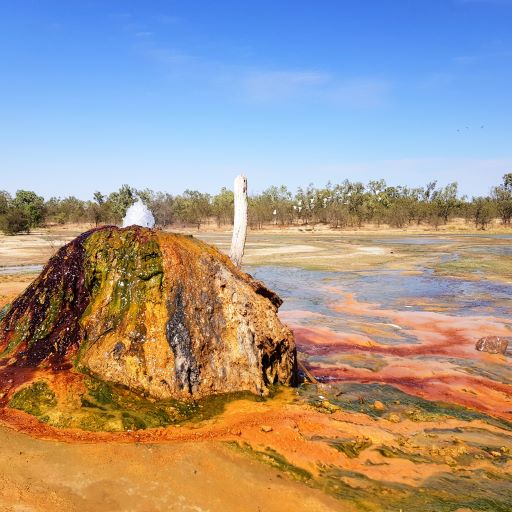
Leichhardt Falls was our next stop and although it is the dry season so not a lot of water, still a very pretty place and a great camp ground. We decided to have a look from the smaller side next and promptly got bogged in the soft sand. Lucky we have rescue treads on the roof. Took longer to unscrew all the fittings holding them on the roof than it did to drive out. While Steve was doing that I was watching hundreds of Corella’s in one tree. Funny birds.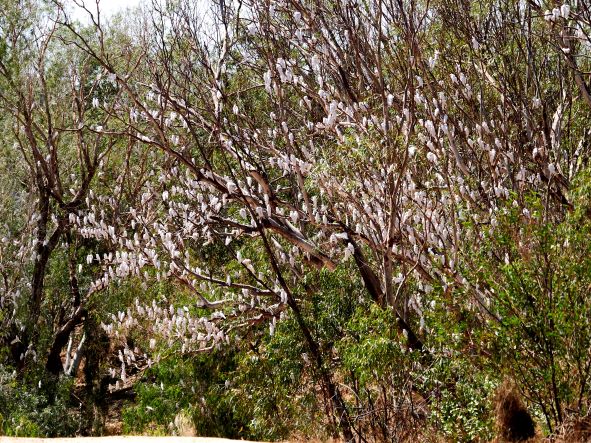
Karumba, the Barramundi capital (and boy was the barramundi good). The Barra Discovery Centre was well worth a visit, highly informative and quite surprising. Sunsets are renowned here, but not that amazing while we were here. It is also a birding heaven and there was certainly plenty about, nice walks and boat
cruises. We were particularly pleased to find the Elusive Star Finches, very special. An interesting thing at the time was that a plague of locusts had been though and every palm tree was completely stripped.
One night the campsite asked all guests to go to main area, something to do with filming an ad for the park. OK, but then they made us do this fake sing song and clapping to make it look like everyone was having fun. If I saw that it would put me off staying……
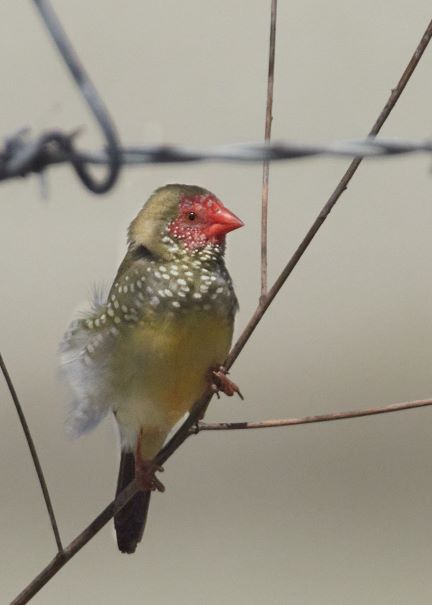
Normanton wetlands was a dead loss at this time of year, no water but Cumberland Dam (Chimney) was a beautiful oasis of trees, lilies and birds. Just a pity that unlike us in a tent there were too many caravan campers with generators. I do not understand going to such peaceful and beautiful places to sit in a van with air conditioning and TV – and ruin the ambience for nature lovers.
Another thing I do not understand is why the majority of caravaners seem to sit on 80km per hour on hard roads (annoying when speed limit may be 110 or 130), then on dirt roads speed around like lunatics, way to fast for the conditions. One such has damaged our windscreen in 2 places as it went round a bend on dirt with its trailer skidding around behind it, spraying stones everywhere.
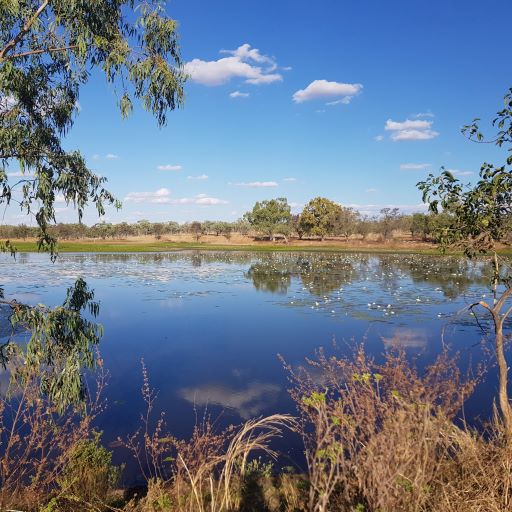
Cobbold Gorge, a hidden gem with a glass bridge over the gorge and an amazing boat journey through a stunning gorge. In our eagerness to get here though we did not go to the Georgetown Gem Museum which I have now learnt more about – should have taken the time and not missed it.
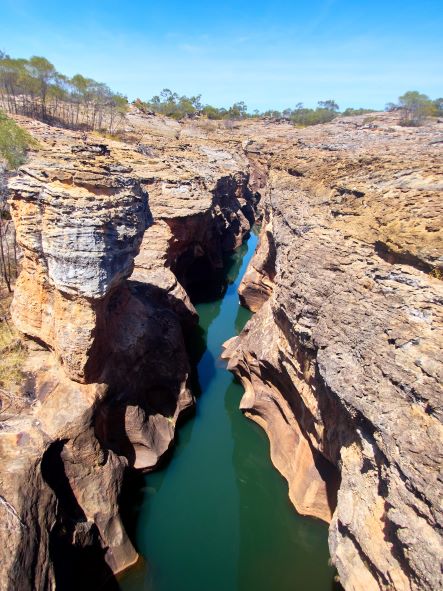
https://www.cobboldgorge.com.au/
On our 2nd night here the rain came down in buckets – all night. A tiny open crack in car window let in so
much water that my phone (on the seat) and computer (under the seat) got drenched and stopped working. 2 days before my seat was dry. This was the start of 2 weeks of rain.
Missed a few other things in this area, Agate Fossil Hunting in Agate Creek near Forsayth another we did not make time for but would have been fun and Talaroo Hot springs which was just not on the route but really was not far out of the way in the scheme of things, it looked stunning.
Einasleigh, a small village but with interestingly carved trees in the small park and a lovely historical railway station.
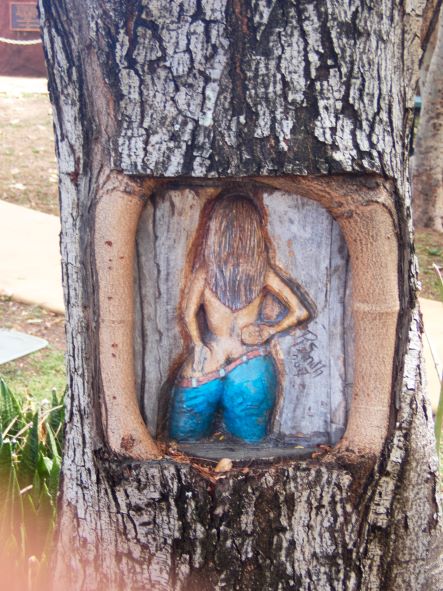
Nearby was Copperfield Gorge – not a lot of water but would be great at the end of the wet season. Next to Undarra Volcanic National Park (like Cobbold we had not heard of either till planning this trip).
Busier and more commercial than Cobbold Gorge campsite but this is the only way to visit the park, on tour with a ranger. Mainly due to the tunnels filling with carbon dioxide and being dangerous. Many have walkways which could lead people to think it is OK to enter, but these are used by scientists in full protective gear and breathing apparatus. There are 3 lava tubes that are OK to go in (although till about 10 days prior to arrival they were full of water and not accessible). The lava tubes are full of micro bats and often snakes in the trees outside waiting to catch the bats.
The vine thicket patch is one of only 3 left in the world and millions of years old. The tour and the history
were absolutely fascinating and amazing how the animals etc naturally protect the vine thicket from fire. I also never knew that Australia had so many old volcanoes (and one that is not considered extinct).
On our last day we walked up Kalkani Crater, which was a great walk with amazing views over some of the other volcanoes. (We would have loved to do for sunset, supposed to great from up there – but guess what, still raining). On exiting the carpark Steve managed at approx 1km per hour to reverse the corner of the car into a spindly young tree. Bent the spare wheel carrier right into the boot so that we could not open it. Luckily the maintenance team at Undarra helped to pull it out enough so that we could open boot. Phone calls to insurance and we could keep going, take it into one of their garages in next town. (3rd bad luck issue? windscreen, electrical items and now reversing -hopefully nothing else on this trip).
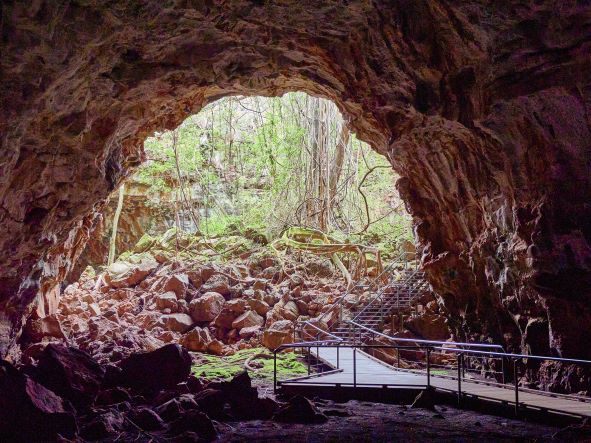
https://parks.des.qld.gov.au/parks/undara-volcanic/about/culture.

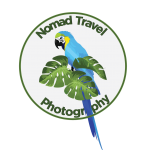
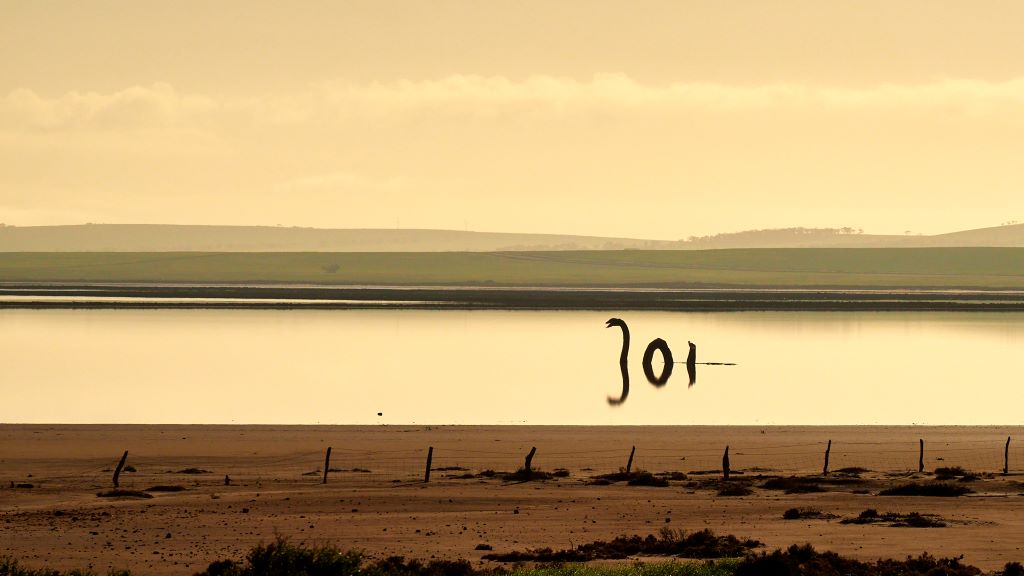
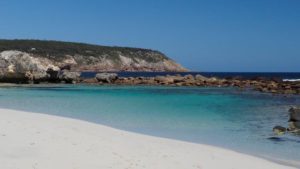

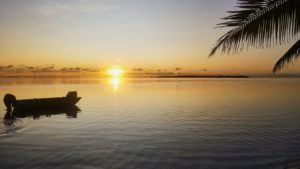
Great blog yet again and gorgeous photos, great reading